A Cartastic Guide to the Various Porsche 911 Models
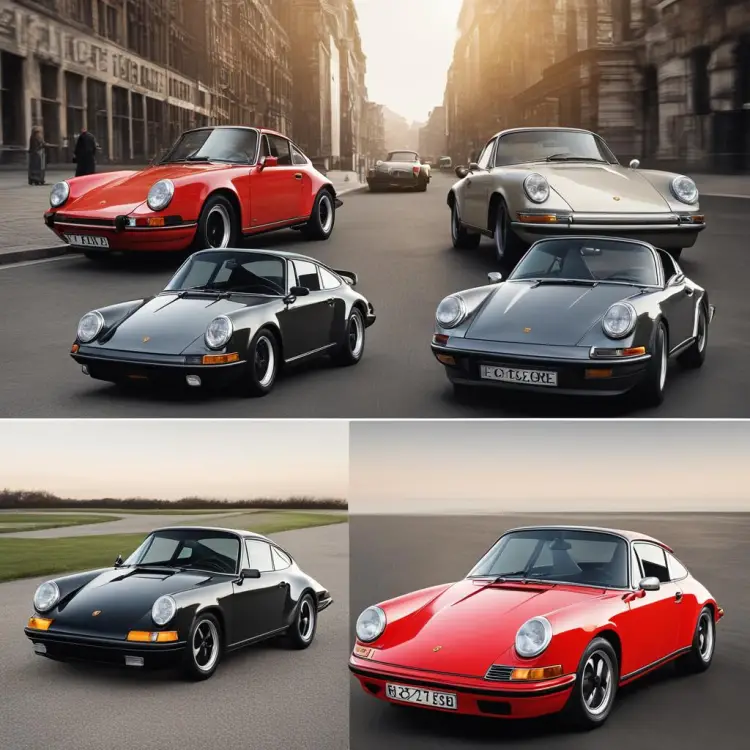
A Guide to the Various Porsche 911 Models
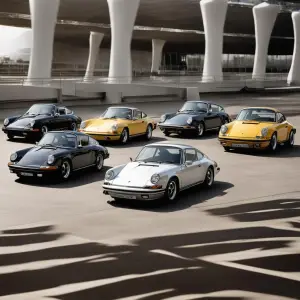
So you’ve decided to treat yourself to a Porsche 911. Excellent choice—that rear engine and distinctive silhouette are iconic for a reason. But with over 20 variants of the 911 currently in production, how do you choose? Don’t worry, we’ve got you covered.
In this guide, we’ll walk you through the different 911 models so you can find your perfect match. Whether you want a stripped-down speedster, a luxurious cabriolet, or an all-wheel-drive monster that handles any road, Porsche has a 911 for every taste and budget. We’ll review the latest specs and prices for the Carrera, Targa, Turbo, GT3, and other 911 variants. By the end we’ll have you placing an order for your dream 911—now comes the tough part, choosing the interior leather and paint options. Buckle up, you’re about to enter the fast lane.
Overview of the Legendary Porsche 911
The Porsche 911 is an iconic sports car in production since 1963. Through the decades, Porsche has released various versions of the 911 with different specs and performance levels.
The Carerra models
The entry-level Carerra models have a turbocharged flat-six cylinder engine producing around 350 to 380 horsepower, depending on the year. They offer an ideal blend of power and handling for everyday driving and weekend getaways.
The GTS models
For those seeking more performance, the GTS models boost the flat-six engine to produce 450 horsepower. Lowered sport suspension, torque vectoring, and performance exhaust provide an exciting drive experience. The GTS models strike a balance between the base Carerra and hardcore GT variants.
The GT models
The GT models are the highest-performance versions, with up to 700 horsepower in the latest GT2 RS. They feature aggressive bodywork, track-tuned suspension, and high-performance brakes. The GT3 is ideal for track days, while the GT2 RS is one of the fastest production cars on the planet.
Targa, Cabriolet, and Speedster
In addition to the coupe, Porsche offers open-top variants of the 911 including the Targa, Cabriolet, and Speedster. The Targa features a retractable roof panel, the Cabriolet has a soft top, and the Speedster has a more minimalist convertible design. Go full throttle with the top down in a 911 GT3 Cabriolet or Speedster for the ultimate thrill.
With so many variants of this legendary sports car, there’s a Porsche 911 for all tastes and budgets. Finding one that matches your desires for style and performance has never been easier. The 911 continues to define the premium sports car experience.
The Early Air-Cooled Porsche 911 Models (1963-1998)
The early air-cooled Porsche 911 models, produced from 1963 to 1998, are iconic classics that any sports car enthusiast should become familiar with.
The Original 911 (1963-1973)
The first Porsche 911 model debuted in 1963 with its signature rear-engine, flat-six cylinder design that Porsche is known for. This lightweight, elegant sports car produced 130 horsepower and could go from 0 to 60 mph in about 9 seconds. Four- and five-speed manual transmissions were offered.
The G-Series (1973-1989)
The G-series saw the introduction of the famous 930 Turbo model in 1975, Porsche’s first turbocharged production car with an air-cooled engine. The normally aspirated G-series models produced 150 to 231 horsepower, with the Carrera model at the top of that range. Improved handling and brake designs enhanced performance.
The 964 (1989-1994)
The 964 generation brought modern updates like power steering, ABS brakes, and a new six-speed gearbox. The standard model made 247 horsepower, while the Turbo now pumped out 315 horses and did 0 to 60 in under 5 seconds. For the track, the 964 RS produced 260 naturally aspirated horses.
The 993 (1993-1998)
The final air-cooled generation, the 993 featured an updated chassis, suspension, and a new multi-link rear axle for improved handling. The standard Carrera made 272 horsepower, the Carrera S 287, and the Turbo 408 horsepower with rear-wheel drive or all-wheel drive. Truly the end of an era.
With timeless styling and visceral driving experiences, these classic 911s represent Porsche at its best. If you ever get a chance to own or drive one, take it—you’ll be forever glad you did.
The Water-Cooled 996 Generation (1999-2004)
The 996 generation of the Porsche 911 debuted in 1999 and marked the first major redesign of the 911 in over 30 years. This generation saw the transition from air-cooled to water-cooled flat-six engines. While controversial at first, the water-cooled engines provided more power and better efficiency.
The 996 came in several variants over its production run:
- The Carrera produced 300 horsepower and had a top speed of 170 mph. This model provided an exciting blend of performance and (relative) affordability.
- The Carrera 4 and 4S added all-wheel drive for improved handling and control.
- The Turbo models were the range-toppers, producing 415-450 horsepower and a top speed of 190 mph. The Turbo was a technological tour de force and demonstrated Porsche’s engineering prowess.
- The GT3 was a lighter, more hardcore version designed for track use but still street-legal. It produced 360 horsepower and focused on maximizing performance and driver engagement.
The 996 generation saw incremental improvements over its lifetime. In 2002, the engines received a power bump, the styling was refreshed, and the interior was upgraded. While the styling of the 996 was controversial and a departure from the iconic 911 shape, its performance and capabilities were undeniable. The water-cooled engines provided more usable power and reliability compared to the previous air-cooled units.
Porsche aficionados and critics eventually warmed up to the changes introduced in the 996, and today these models provide a compelling combination of performance, styling, and value. If you’re looking for a capable yet affordable 911, the 996 generation deserves a serious look. With striking looks, thrilling performance, and the prestige of the Porsche badge, the 996 cemented itself as a pivotal chapter in the evolution of the 911.
The 997 Generation Porsche 911 (2005-2012)
The 997 generation of the Porsche 911 spanned from 2005 to 2012. This generation saw the introduction of some major changes, including the first Porsche 911 Turbo equipped with a twin-turbo flat-six engine and all-wheel drive. The 997 generation also saw the introduction of the GT2 and GT3 variants for enthusiasts seeking maximum performance.
The 997 had an evolutionary but significant redesign. It featured smoother body panels but retained the familiar 911 shape. The interior was also upgraded with higher-quality materials and the latest technology. The 997 generation marked the first time that the 911 was offered with a 7-speed manual transmission, providing an even sportier feel.
Engine and Performance
The 997 generation was offered with a variety of flat-six engines:
- The Carrera and Carrera S models came with 3.6L and 3.8L engines producing between 345 to 385 horsepower.
- The 911 Turbo models featured twin turbochargers and all-wheel drive, with the Turbo producing 480 horsepower and the Turbo S producing 530 horsepower.
- The GT2 and GT3 variants were aimed at enthusiasts, with the GT2 producing 530 horsepower and the GT3 producing 435 horsepower.
Porsche’s emphasis on performance was clear in the 997 generation. The new engines and technologies allowed the 997 to accelerate faster and handle better than previous generations. The 997 set a new standard for what a sports car could achieve.
Overall, the 997 generation of the Porsche 911 built upon the success of previous generations but took performance, design, and technology to new heights. It’s no wonder that the 997 is considered by many Porschephiles to be one of the greatest 911 generations of all time.
The New 991 Generation Porsche 911 (2013-Present)
The 991 generation of the Porsche 911 was launched in 2013 and is still in production today. This generation saw a complete redesign of the iconic sports car, with a longer wheelbase and wider stance for improved handling and performance. If you’re looking for a nearly new 911, the 991 models offer cutting-edge tech, styling, and performance.
Engine and Performance
The 991 generation offers a range of powerful and efficient engines. The base Carrera model has a 3.4-liter flat six-cylinder engine producing 350 horsepower, while the GTS model boosts that to 450 horsepower. The GT3 RS peaks at 520 horsepower from its 4.0-liter naturally aspirated engine. No matter which 991 you choose, you’ll experience thrilling acceleration and handling.
Styling and Design
The 991 has a more streamlined and modern design than previous generations. It has a lower, wider stance, flush door handles, and a retractable rear spoiler. The interior was also overhauled with high-quality materials and the latest technology like a touchscreen infotainment display. While recognizably a 911, the 991 has a sleeker, sportier look that turns heads.
Advanced Safety and Technology
The 991 generation saw huge leaps forward in technology and safety. It offers advanced driver assistance systems like emergency braking, lane keeping assist, and adaptive cruise control. The infotainment system features a high-resolution touchscreen, navigation, Bluetooth, and USB connectivity. Options include a Burmester premium audio system and a Sport Chrono Package with an integrated lap timer.
Whether you opt for the base Carrera coupe or a high-performance GT3 RS, the 991 generation of the Porsche 911 offers an unparalleled blend of power, technology, and prestige. For many driving enthusiasts, the 991 represents the pinnacle of the iconic 911. If you get a chance to own or drive one, take it—you won’t regret experiencing this automotive legend.
Comparing the Different Porsche 911 Generations
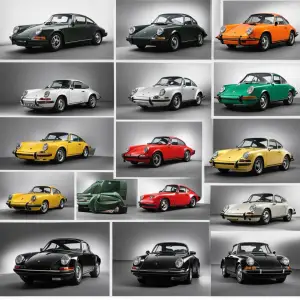
The Porsche 911 is an iconic sports car that has been in production since 1963. Over the decades, Porsche has released many different generations and variants of the 911. Here’s an overview of how the primary generations compare.
901/911 Series (1963-1973)
The original 911 established the rear-engine, flat-six platform that endures today. These early models produce 130-210 horsepower, reaching 60 mph in around 6-7 seconds. They’re light, loud, and raw—a true driver’s car. Prices for the 901/911 series start around $80,000 for a project car and up to $200,000+ for a concours-level example.
G Series (1973-1989)
The G series saw more power, luxury, and weight added to the 911 formula. Engine outputs ranged from 165 to 247 horsepower, with performance improving to 5-6 seconds 0-60 mph. The iconic “Whale Tail” and “Tea Tray” spoilers appeared. Prices range from $30,000 for a driver-quality SC or Carrera up to $150,000 for a rare Turbo or Slant Nose variant.
964 Series (1989-1994)
The 964 brought modest styling updates and an advanced multi-link rear suspension. Power outputs spanned from 247 to 400 horsepower for the Turbo, allowing 0-60 mph times of 4.5-5.5 seconds. Prices range from $25,000 for a base Carrera 2 up to $120,000 for a Turbo.
993 Series (1995-1998)
The 993 is considered by many Porschephiles to be the ultimate air-cooled 911. With power ranging from 272 horsepower for the Carrera to twin-turbocharged 408 horsepower for the Turbo S, performance was the best yet for a classic 911. Prices start around $45,000 for a Carrera and go up to $250,000 for a Turbo.
From the raw and lightweight original to the refined yet still potent 993, there’s no going wrong with any generation of this automotive icon. Whatever your budget, style, or performance needs, there’s a perfect Porsche 911 out there waiting for you.
The GT Porsche 911 Models Over the Years
The GT models represent Porsche’s high-performance variants of the 911. Over the years, Porsche has released several GT models that push the limits of power and handling. These models are for the true Porsche purists seeking an adrenaline rush behind the wheel.
The 993 GT2 (1995-1998)
Released in 1995, the 993 GT2 produced an impressive 430 horsepower from its twin-turbo flat-6 engine. It featured rear-wheel drive and a 6-speed manual transmission. The GT2 was a lighter, more powerful version of the 993, creating a raw driving experience. Only 184 GT2 models were built, making it a sought-after classic today.
The 996 GT2 (2001-2005)
The 996 GT2 upped the power to 483 horsepower and featured an aggressive body kit with a large rear wing. It could reach 60 mph in just 3.9 seconds. The 996 GT2 provided supercar performance and handling in a package that was still somewhat practical for everyday use.
The 997 GT2 RS (2010-2012)
The 997 GT2 RS was the most extreme 997 variant. Power was boosted to 620 horsepower, making it the most powerful street-legal 911 at the time. It featured a stripped-down interior, carbon ceramic brakes, and a top speed of 205 mph. The 997 GT2 RS is considered one of the greatest 911s ever produced. Only 500 were built, instantly turning it into a collector’s item.
The 991 GT2 RS (2017-2019)
The 991 GT2 RS produces an astonishing 700 horsepower, making it the most powerful street-legal 911 to date. It has a top speed of 211 mph and can reach 60 mph in just 2.7 seconds. The 991 GT2 RS represents the pinnacle of the 911 GT models, blending extreme power and performance with daily drivability.
The GT 911 models showcase Porsche’s pursuit of performance. Each new generation pushes the envelope further, combining cutting-edge engineering with a thrilling driving experience that is uniquely Porsche. The GT2 and GT2 RS models in particular represent the best of the 911—the perfect blend of power, handling, and style.
Limited Edition and Special 911 Models
Porsche is known for producing limited edition and special 911 models that push the boundaries of performance and design. These exclusive 911s are highly coveted by collectors and Porsche enthusiasts alike.
911 Speedster
The 911 Speedster pays homage to the original Porsche 356 Speedster of the 1950s. It features a low windshield, shorter side windows, and a manually operated soft top. Powered by a high-performance flat-six engine, the Speedster delivers an exhilarating open-air driving experience. Only 356 units of the 2010 911 Speedster were produced, and they sold out immediately.
911 R
Hailed as a “purist’s 911,” the 911 R embodied driving in its most elemental form. It utilized the chassis and 4.0-liter naturally aspirated engine from the 911 GT3 RS but with a 6-speed manual transmission and rear-wheel drive. A stripped-down interior, lightweight components, and rear seats replaced by storage compartments enhanced its performance-focused character. Porsche built just 991 units of the 911 R, representing the 991 generation of the 911 on which it was based.
911 GT2 RS
The 911 GT2 RS is the most powerful 911 variant ever built by Porsche, boasting 700 horsepower and performance that rivals dedicated race cars. It can accelerate from 0 to 60 mph in just 2.7 seconds and reach a top speed of 211 mph. An aggressive aerodynamic body helps the GT2 RS generate up to 595 pounds of downforce at top speed. Only 1,000 units of the 2018 GT2 RS were produced, cementing its status as an ultra-exclusive supercar.
While standard 911 models offer an unparalleled driving experience, these premier limited edition variants take performance, luxury, and exclusivity to the utmost level. Owning one is the pinnacle of Porsche ownership and a dream come true for die-hard fans of the brand.
Porsche 911 Model FAQs: Your Top Questions Answered
You’ve got questions, we’ve got answers. Here are some of the most frequently asked questions about the various Porsche 911 models.
What’s the difference between the 911 Carrera and the 911 Turbo?
The 911 Carrera is Porsche’s base model sports car, while the 911 Turbo is a higher-performance version. The Turbo typically has a more powerful engine, all-wheel drive for better handling, and additional luxury features. The Carrera is rear-wheel drive and a bit more affordable, ideal if you want a thrilling Porsche experience without the Turbo’s price tag.
Which 911 has the best performance?
If performance is your top priority, the 911 GT3, GT3 RS, and Turbo S are your best options. These offer Porsche’s most powerful engines, sophisticated aerodynamics, and track-tuned handling. The GT3 and GT3 RS are designed for maximum speed and control, with a naturally aspirated 4.0L engine that puts out up to 520 horsepower. The Turbo S uses a twin-turbo 3.8L engine with 640 horsepower, making it one of the quickest 911s ever built.
Do all 911 models have a manual transmission option?
No, not all current 911 models offer a manual transmission. The base Carrera, Targa, and Cabriolet models provide the option of a 7-speed manual or 8-speed PDK automatic. However, the Carrera GTS, GT3, and Turbo models only come with the PDK automatic. Porsche reasons that the PDK can shift faster and handle the power of these high-performance models better than a manual. If driving a manual Porsche is important to you, stick with the Carrera, Targa, or Cabriolet.
How much cargo space do the 911 models have?
Porsche 911 models are 2-seaters, so cargo space is limited. The front trunk, known as the “frunk,” holds about 5 cubic feet. The rear seats don’t fold down, but a shallow rear trunk provides an additional 4 cubic feet of space. So you can pack a couple of suitcases and maybe some extras, but the 911 is designed more for a weekend getaway than long road trips with lots of luggage. If cargo space is a concern, you may want to consider Porsche’s Cayenne SUV instead.
What kind of gas mileage can I expect from a Porsche 911?
Fuel economy will vary significantly based on which 911 model you choose. The base Carrera with a manual transmission can achieve up to 21 mpg city and 29 mpg highway. The high-performance Turbo and GT3 models are quite a bit thirstier, around 17/23 mpg. In real-
Conclusion
So there you have it, a quick tour through the storied history of the Porsche 911. Whether you’re looking for a classic sports car to take on weekend cruises, a track-ready beast that can set record lap times, or something in between that provides daily drivability with supercar performance, the 911 range has you covered. With over 50 years of continuous refinement and more variants than you can shake a stick shift at, the 911 remains an automotive icon that delivers a singular driving experience found nowhere else. If you’re ready to step into the world of Porsche and experience the thrill of its most famous model, start by test-driving a few of its different generations. There’s a 911 for all tastes out there, so get ready to find your perfect match and unleash your inner race car driver. The open road awaits!










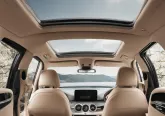
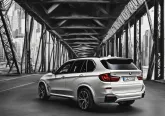
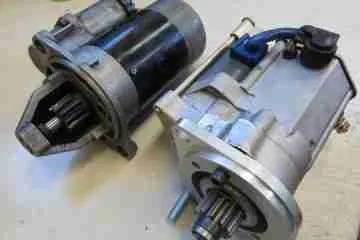

No Comment